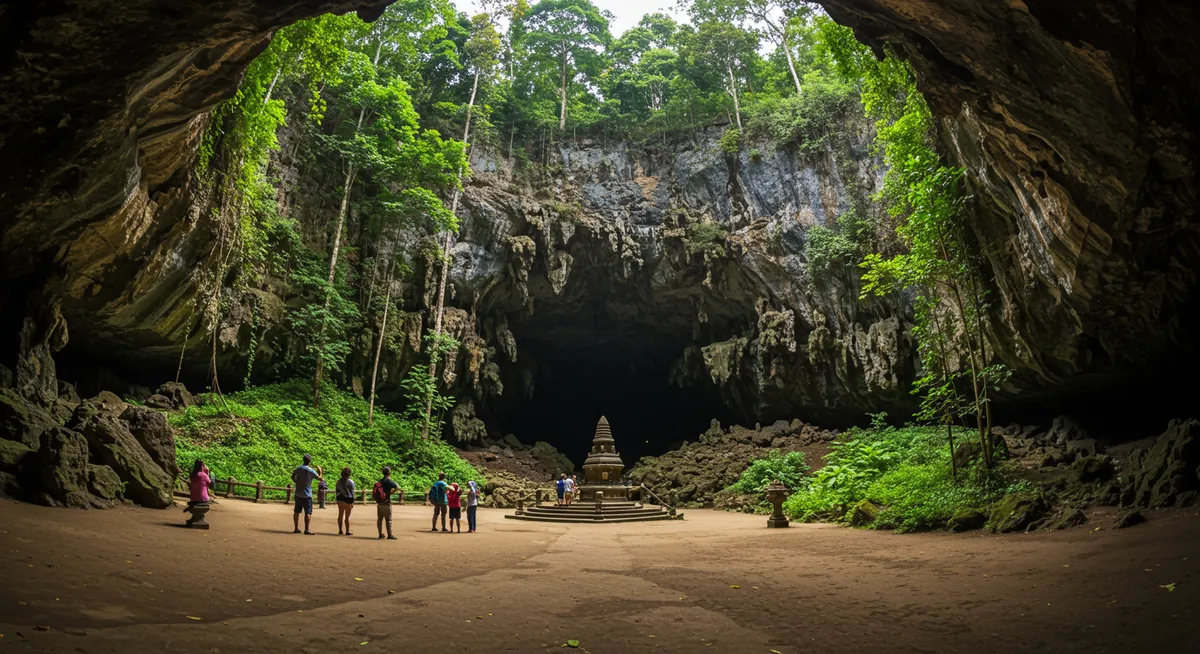
Niah Caves: Unveiling Malaysia's Deep History
Table of Contents
Want to find the best nature experiences for this destination? Chat with our nature tourism specialist!
Get Nature TipsCategory: niah-caves-historical-significance
The Profound Niah Caves Historical Significance in Miri, Malaysia
Having explored many of Southeast Asia's natural wonders, few places have captivated me quite like the Niah Caves. Located in Sarawak, Malaysia, these monumental limestone formations are not just geological marvels; they are also a cornerstone of our understanding of ancient human history in the region.
The Cradle of Early Human Civilization
The Niah Caves stand as an undeniable testament to prehistoric human occupation, making their Niah Caves historical significance truly profound. This site holds the earliest human remains discovered in Southeast Asia, specifically the 40,000-year-old 'Deep Skull' of a Homo sapiens. When I first stepped into the vast main chamber, I felt a deep connection to those ancient inhabitants who called this place home. The caves offered shelter, a source of food through swiftlets' nests, and perhaps spiritual solace, creating a dynamic environment for early human activity. It’s a crucial site for understanding early migrations and human evolution across the continent, forming a vital part of Sarawak's heritage.
Unearthing Archaeological Marvels
Decades of archaeological excavations within the Niah Caves have yielded an extraordinary treasure trove of artifacts, significantly bolstering their Niah Caves historical significance. Beyond the 'Deep Skull', researchers have uncovered tools, pottery, rock paintings, and ancient burial sites, painting a vivid picture of Stone Age life. These findings illustrate the sophisticated skills and daily existence of early communities in the region, showcasing their adaptability and ingenuity. Visiting the on-site museum provides a fascinating glimpse into these discoveries, although nothing beats seeing the immense cave formations themselves. It's clear why Niah remains a focal point for understanding the distant past of Malaysia's natural attractions, a key part of Miri's allure.
Niah's Enduring Legacy and Cultural Impact
The Niah Caves historical significance extends far beyond academic circles, influencing Malaysia's cultural identity and tourism industry. The caves are a living testament to the continuity of human presence, with indigenous groups like the Penan and Berawan still traditionally collecting swiftlet nests for centuries. This practice links the deep past with the present, showcasing a sustainable tradition. My personal experience highlights the balance between preserving this precious heritage and allowing visitors to appreciate it. Niah is also a significant contributor to Miri’s ecotourism activities, drawing visitors who seek both adventure and a profound connection to ancient human history and natural wonder, distinguishing it from other sites.
Protecting this Priceless Heritage Site
Given the immense Niah Caves historical significance, conservation efforts are paramount to preserving this invaluable heritage for future generations. As a UNESCO World Heritage site nominee, the caves are under strict protection, balancing scientific research with controlled tourism. This involves managing visitor impact, preserving fragile archaeological layers, and protecting the rich biodiversity within and around the caves. Unlike the pure geological marvels of Mulu National Park tours from Miri, Niah's complexity demands integrated conservation of its human and natural history. It's crucial for visitors to respect the guidelines to ensure these ancient wonders continue to inspire and inform, allowing everyone to contribute to their enduring legacy.
Frequently Asked Questions
What is the Niah Caves historical significance?
Where are the Niah Caves located?
The Niah Caves stand as a profound monument to human history, revealing layers of prehistoric occupation and cultural evolution in Southeast Asia. Their immense Niah Caves historical significance offers a rare glimpse into the lives of our ancient ancestors, enriching our understanding of human ingenuity and adaptability over tens of thousands of years. From the earliest settlers to the traditional nest collectors of today, Niah continues to tell a compelling story.
Embark on your own journey through time and explore the wonders of Niah National Park.